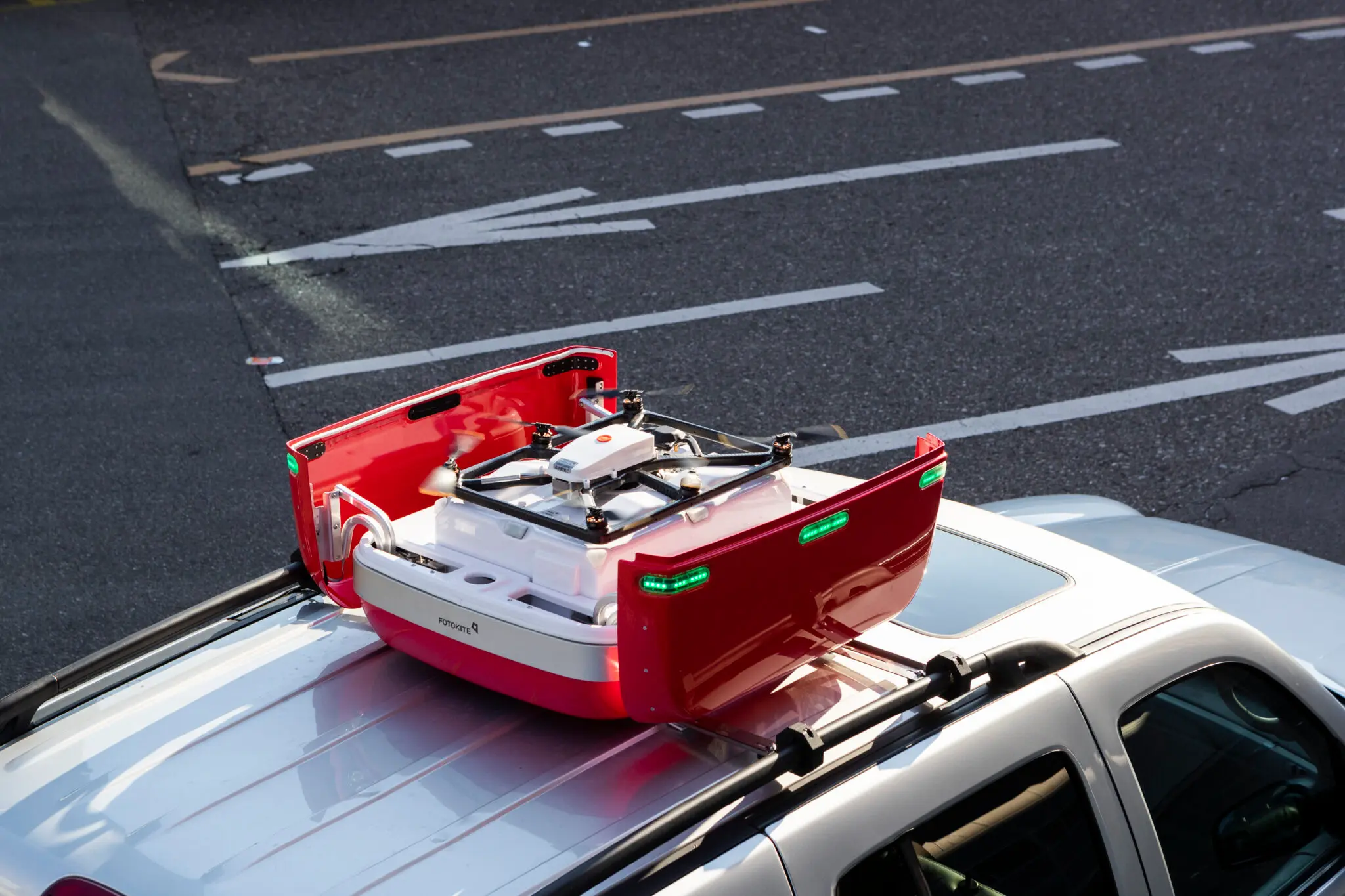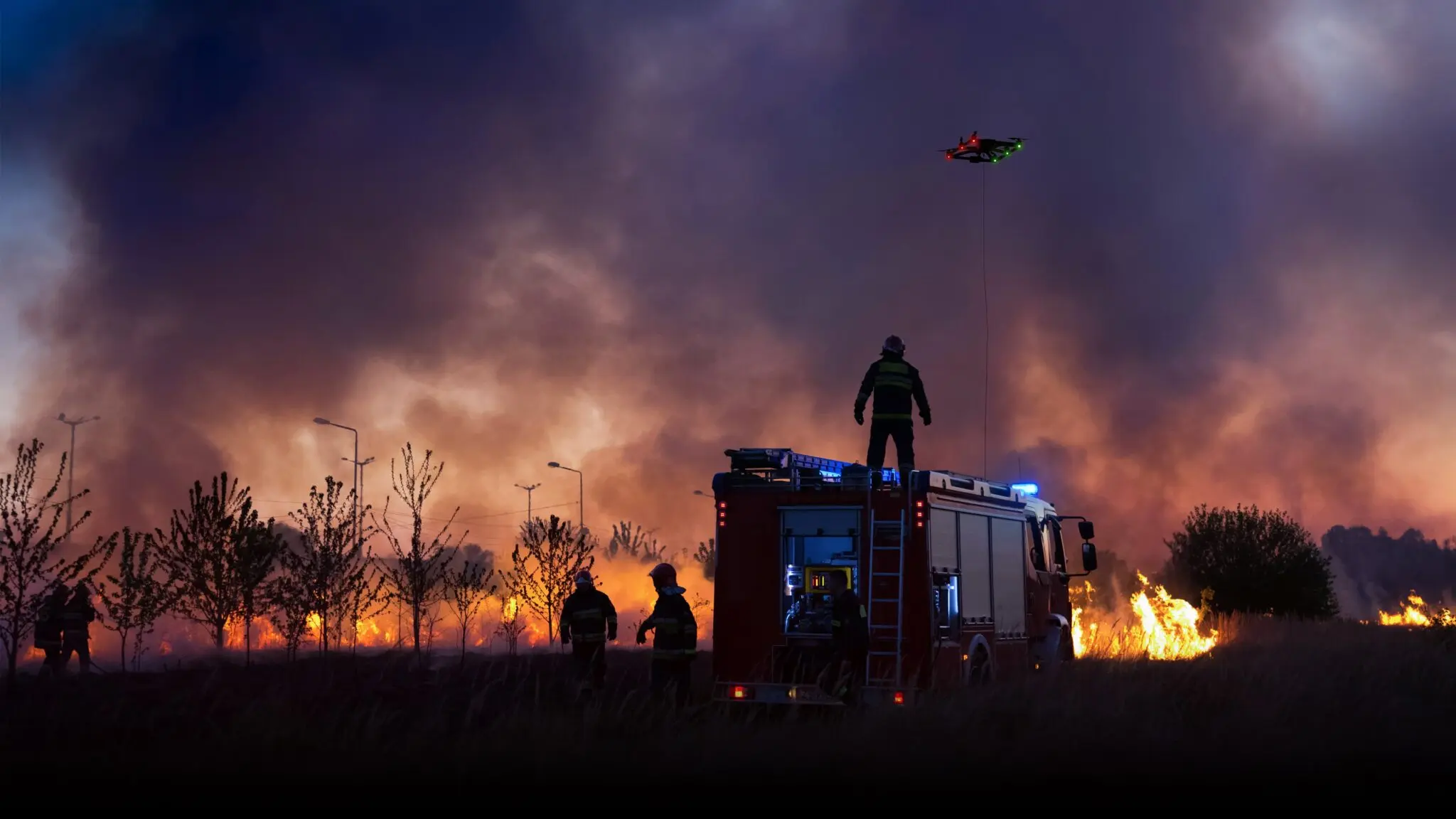Emergency Response Plan
When first responders rush to the scene of an emergency, achieving a comprehensive understanding of the challenge they are about to fight is very high on their list of needs.
Whether it’s a fast-spreading bushfire, rising flood waters, the scene of a serious traffic crash or a rowdy crowd at a crowded event, initial decisions on how exactly to respond to the unfolding emergency require intelligence about the task at hand.
That’s where new technology like the FotoKite actively tethered surveillance system comes in.

“It’s effective. It’s fit for purpose. It does exactly what it advertises, and it does that very well,” said Jason Alcorn, head of uncrewed operations at Public Safety Training & Response Group, the exclusive Australian dealer of the FotoKite system.
“It has very relevant emergency services first responder applications; we’ve used it to monitor controlled burns, for example, both to monitor the progress of the burn and to monitor the safety of the members conducting the burn.”
“It’s designed for simplicity and ease of operation and to provide optical and thermal imagery to first responders on scene, to incident command centres and incident commanders.”
Ongoing situation awareness on scene
“This gives ongoing situational awareness of that incident scene, both to first responders on the scene, to an incident command centre, and also live-streamed anywhere another individual has connectivity. It could be to an expert in hazardous materials, for example, so rather than communicate by phone you can actually share a mission, or event-specific video feed, to individuals as it unfolds in real-time. It’s easy to learn and training can be provided quickly and easily for its use.”
In such emergencies, knowledge is power – that real-time video helps inform and influence a better plan of attack, potentially the difference between a successful response and a failure. And that knowledge is even more vital when lives are in danger and the response must be not only quick, but also correct.
Obviously, though, the frantic and harsh environment of an unfolding community emergency means technical and electronic equipment such as a drone needs to be fail-safe. The designers of FotoKite have worked diligently to load it with features and redundancies that boost its usability and reliability.
With that one touch, the tethered drone rises above the scene to a maximum height of 45m, and there it stays to provide situational awareness for the duration (during testing, the FotoKite flew non-stop for one month). It requires no human pilot, meaning all personnel are free to direct physical response to the actual emergency.
Designed and engineered for surveillance and situational awareness

The FotoKite is designed and engineered to maintain that fixed position in space for a stable surveillance or situational awareness platform.
In windy conditions, the FotoKite self-determines whether it is safe to remain aloft at the assigned height, or whether to descend to a safer height. If one – or even two – of the rotors fail, the Fotokite is designed to maintain flight and autonomously, immediately land, safely.
The tether provides positional stability, but also delivers power to the drone and enables hardwired data delivery. If the tether is accidently severed (for which the designers have tested but has never occurred during actual operation), the Fotokite promptly descends back to its base, powered by its onboard batteries.
The FotoKite’s cameras have been upgraded to include a 16x optical zoom, enabling close-up inspections by the remote user, and its thermal imagery is not impacted by smoke haze.
With these advantages and design elements, it’s no surprise then that this versatile, quick, helpful new technology proved a big hit with first responders at AFAC24, Australia’s premier firefighting and emergency management conference.
“I think first responders can see the application and relevance to their work compared to existing technology – including CCTV cameras fixed to and erected on scene to poles,” Mr Alcorn said of the FotoKite’s demonstrations and discussions.
Public Safety is a priority
“They’re excited about that ability to livestream footage into any command centre, because traditionally… your more-experienced operators are relegated to a command centre role and not necessarily attending the scene, so it allows those more-experienced operators or responders to be able to understand the situation and have input into the first responder’s actions on the ground, deeming public safety as a priority.”
FotoKite was established in Switzerland in 2014 and has since moved its headquarters to the USA. The system has been utilised by major firefighting organisations in Los Angeles, New York and Chicago, as well as in Canada, the UK, France, Norway, Italy and Switzerland and also by rural firefighters across the USA. While initially designed for firefighters, it is now also widely in use in law enforcements and crowd control.
FotoKite has been recognised with numerous international design and technology awards.
“We promote FotoKite and other drone capabilities and offer drone training, demonstrating its function to first responders, providing trials to responders and various clients and can provider operators as a third party to operate FotoKite operationally in support of their team members,” Mr Alcorn explained.
“First responders who inspected the technology can clearly understand the value of a stable, aerial, camera providing video oversight of an emergency.”
Find out more about drone courses here.
Book Now


